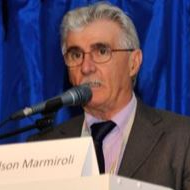Nanobiotechnologies in Environment and Medicine
A special issue of Nanomaterials (ISSN 2079-4991). This special issue belongs to the section "Environmental Nanoscience and Nanotechnology".
Deadline for manuscript submissions: closed (31 March 2023) | Viewed by 21949
Special Issue Editors
Interests: environmental biotechnology; microbial ecology
Special Issues, Collections and Topics in MDPI journals
Interests: nano-enabled agriculture; nanotoxicology; food security
Interests: nanomaterials; genomics; transcriptomicis; abiotic stress
Special Issues, Collections and Topics in MDPI journals
Special Issue Information
Dear Colleagues,
Biotechnologies have a fundamental role in developing environmental preservation and medicine (green biotechnologies and red biotechnologies). Nano-enabled biotechnological solutions may exert the same or an even greater attraction and impact on the scientific community and wider society in the future.
Fields such as bioremediation, phytoremediation or, more generally, sustainable solutions for environmental health, but also for the reduction or abatement of greenhouse gases, will certainly benefit from the encounter between nanomaterial science and biotechnology.
On the other hand, if environmental health is relevant to maintaining human health, the possibility of a more direct role of nanobiotechnologies in preventing or preserving human health cannot be ignored. Relevant examples include nano-treatments or treatments with nano-enabled constructs for specific human diseases, as well as the production of novel foods which involve nanobiotechnology to prevent or support the needs of actual lifestyles.
Prof. Dr. Nelson Marmiroli
Dr. Jason C. White
Dr. Luca Pagano
Guest Editors
Manuscript Submission Information
Manuscripts should be submitted online at www.mdpi.com by registering and logging in to this website. Once you are registered, click here to go to the submission form. Manuscripts can be submitted until the deadline. All submissions that pass pre-check are peer-reviewed. Accepted papers will be published continuously in the journal (as soon as accepted) and will be listed together on the special issue website. Research articles, review articles as well as short communications are invited. For planned papers, a title and short abstract (about 100 words) can be sent to the Editorial Office for announcement on this website.
Submitted manuscripts should not have been published previously, nor be under consideration for publication elsewhere (except conference proceedings papers). All manuscripts are thoroughly refereed through a single-blind peer-review process. A guide for authors and other relevant information for submission of manuscripts is available on the Instructions for Authors page. Nanomaterials is an international peer-reviewed open access semimonthly journal published by MDPI.
Please visit the Instructions for Authors page before submitting a manuscript. The Article Processing Charge (APC) for publication in this open access journal is 2900 CHF (Swiss Francs). Submitted papers should be well formatted and use good English. Authors may use MDPI's English editing service prior to publication or during author revisions.
Keywords
- environment
- bioremediation
- phytoremediation
- sustainability
- CO2 reduction
- human health
- nanobiodelivery
- novel nanofoods and ingredients







